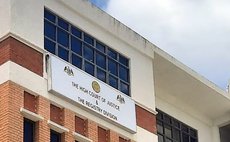Sun's Weekly Hurricane Tips
Farm Recovery Tips for After a Hurricane

Livestock
- After a hurricane or flood, the farm should be returned to production as soon as possible:
- Remove zinc sheets, lumber, nails, etc., that can cause damage to animals;
- Clean-up debris of damaged plants;
- Salvage valuable trees or plants;
- Dispose of dead animals immediately by composting, burial or burning;
- Clean and repair cages, pens, houses as soon as possible and return animals.
Disease in animals may be increased after a flood:
- Check for signs of pneumonia;
- Check animals for distress/illness and consult a veterinarian where necessary;
- Keep vaccinations up to date
- Provide clean and uncontaminated water and feed;
- Clear pasture land
- Where necessary, spray for mosquitoes and other insect pests.
Other Measures
- Inspect chemical stores, clean up any chemical spillage to avoid poisoning and restrict contamination of water sources;
- Effect repairs to storehouses and other structures, if necessary;
- Unclog drains and canals to free up the passage of water;
- Repair drain and canal infrastructure, electrical power lines and (using a competent electrician) pumping stations, if necessary;
- As soon as practicable, address weed control (farms tend to get overrun by weeds following a hurricane)
Fruit tree crops Make a visual assessment of the damage to estimate the cost of resetting the trees or re-establishing the orchard; Be alert and look for fallen or broken high-powered electrical wires which may still be alive and dangerous; * In cutting plants, make sharp, clean cuts at a 45-degree angle to prevent water settling on the cut surface. Use tools such as pruning saw, rolcut/secateurs or chainsaw.
Uprooted trees Cut back secondary branches towards the main stem at an acceptable inner node or branch collar; Prop up trees and cover roots with topsoil; where possible, avoid damage to the base of the trunk;
Mulch, if possible To be effective, mulch should be at least three inches thick and have a three-foot radius around the plant; Do not pile mulch against trunks, as this may cause attack by fungi and borers.
Partially toppled trees * N.B. As trees continue to develop and recover, additional pruning will be essential for proper management of new growth.
Trees with split or twisted trunks Cut below the split or twist at a node or branch collar and at a 45-degree angle; Treat remaining trunk and drench roots with systemic fungicide; * Remove all cut material from the site.
Trees with broken branches Cut back broken branches to next inner node, fork or branch collar; Paint branches exposed to sunlight for the first time with white lime to prevent sunburn. Dilute white lime with water in a 1:4 ratio. Dissolve material to be sprayed 1:1 with water and strain; * Dilute after with an equal volume of water.
Fertiliser application Fertilise tree with a complete fertiliser, 2-3 months after the hurricane. If possible, place the fertiliser in a 1-2m (3-6 ft.) circular area around the trunk of damaged trees, as this is the area where the new fibrous roots will emerge.




